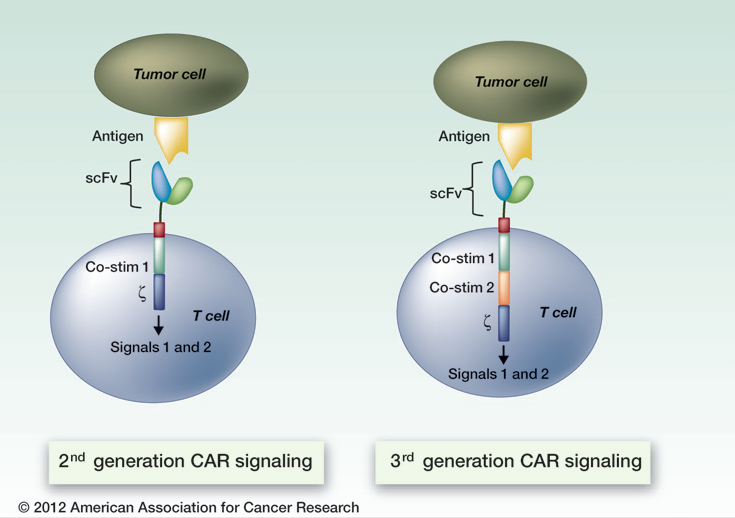For years, the cornerstones of cancer treatment have been surgery, chemotherapy, andradiation therapy. Over the last decade, targeted therapies like imatinib (Gleevec®) andtrastuzumab (Herceptin®)—drugs that target cancer cells by homing in on specific molecular changes seen primarily in those cells—have also emerged as standard treatments for a number of cancers.
 |
| Illustration of the components of second- and third-generation chimeric antigen receptor T cells. (Adapted by permission from the American Association for Cancer Research: Lee, DW et al. The Future Is Now: Chimeric Antigen Receptors as New Targeted Therapies for Childhood Cancer. Clin Cancer Res; 2012;18(10); 2780–90. doi:10.1158/1078-0432.CCR-11-1920) |
And now, despite years of starts and stutter steps, excitement is growing forimmunotherapy—therapies that harness the power of a patient’s immune system to combat their disease, or what some in the research community are calling the “fifth pillar” of cancer treatment.
One approach to immunotherapy involves engineering patients’ own immune cells to recognize and attack their tumors. And although this approach, called adoptive cell transfer (ACT), has been restricted to small clinical trials so far, treatments using these engineered immune cells have generated some remarkable responses in patients with advanced cancer.
Read more: http://www.cancer.gov/about-cancer/treatment/research/car-t-cells










Δεν υπάρχουν σχόλια:
Δημοσίευση σχολίου